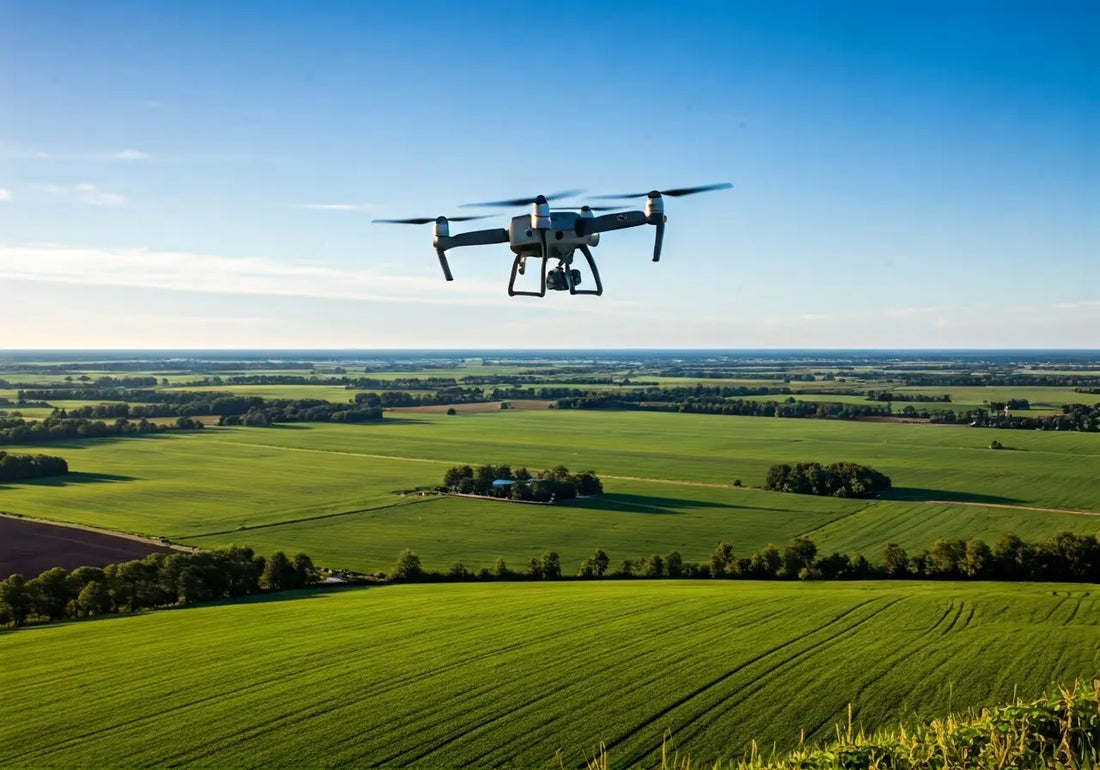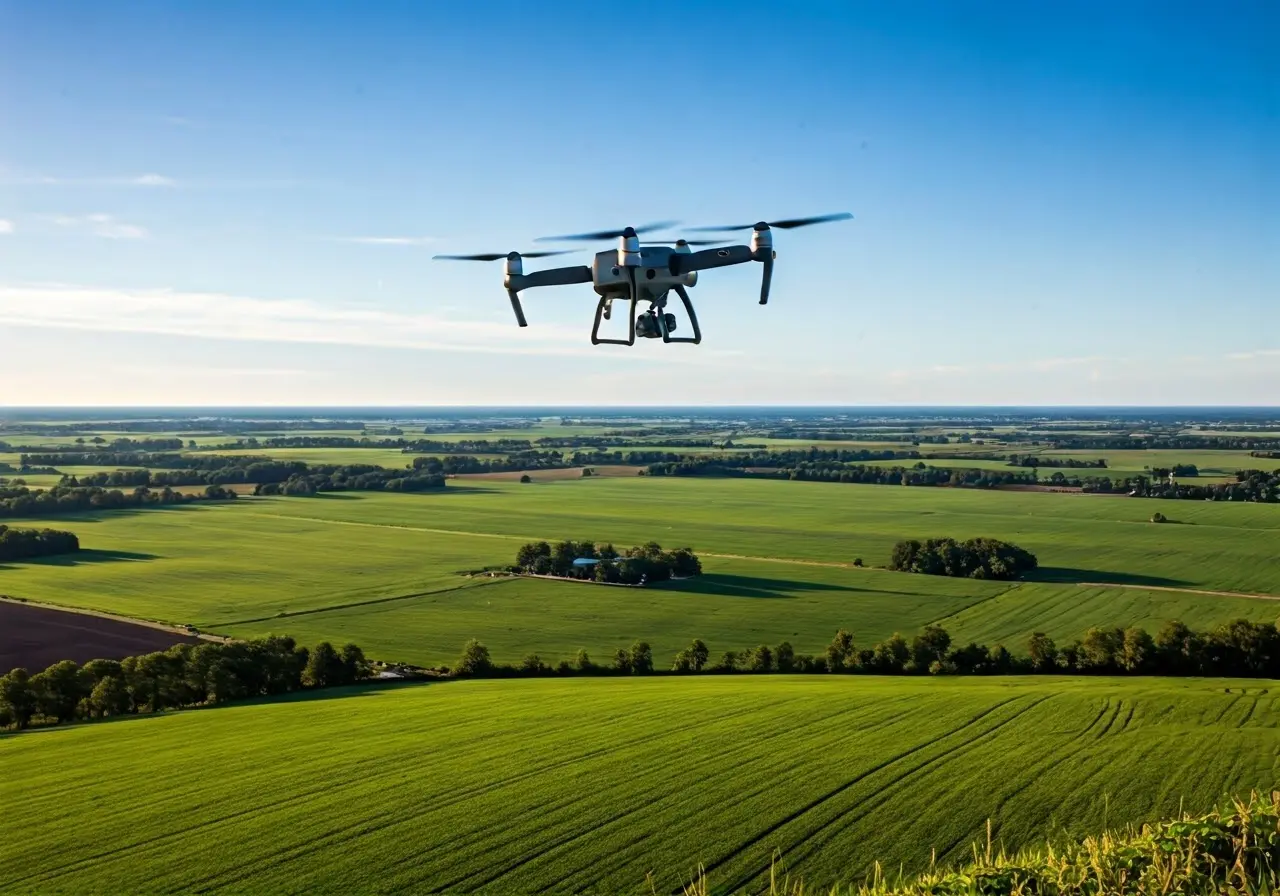
Innovating Agriculture with Drone Crop Scouting Practices
Share
In the rapidly evolving world of agriculture, precision and efficiency have become key players in ensuring sustainable practices and boosting crop yields. One innovative approach making waves is the use of drones for crop scouting. This technology brings a new dimension to traditional farming methods, providing farmers with valuable insights and the ability to make informed decisions. Let’s explore how drone crop scouting is transforming agriculture.
Understanding Drone Crop Scouting: An Overview
Drone crop scouting involves the use of unmanned aerial vehicles (UAVs) to monitor agricultural fields. These drones are equipped with advanced sensors and cameras that collect detailed data on crop health, soil quality, and other critical factors, allowing farmers to optimize their operations.
The beauty of drone technology lies in its ability to provide a bird’s-eye view of vast fields, delivering a comprehensive understanding of crop conditions without the need for physically traversing the land. This aerial perspective enables the capturing of high-resolution images that can vividly illustrate issues that might go unnoticed at ground level. For instance, the detection of crop stress variations and water distribution becomes significantly easier, allowing for timely interventions.
Moreover, the integration of machine learning algorithms with drone technology has ushered in a new era of precision agriculture, where data is not just collected but also analyzed to provide actionable insights. These insights can forecast crop diseases, suggest optimal harvest times, and even recommend specific nutrient applications.
Benefits of Drone Crop Scouting in Agriculture
Utilizing drones in agriculture offers numerous benefits. They provide high-resolution imagery, enable early detection of pests and diseases, and facilitate targeted interventions. This not only saves time and resources but also enhances crop yields and reduces environmental impact.
One of the standout advantages of drone crop scouting is the ability to conduct real-time field analysis. This capability allows for rapid decision-making, which is critical in addressing issues like pest infestations or nutrient deficiencies. Quick action minimizes potential damage and prevents small problems from escalating into larger, more costly challenges.
Additionally, drones save labor and time, reducing the need for manual field inspections that are labor-intensive and sometimes inefficient. This efficiency translates into cost savings, which can be reinvested in other important farm operations. Furthermore, the environmental benefits cannot be overstated. By optimizing inputs like fertilizers and pesticides, drone technology contributes to more sustainable farming practices, ensuring that agriculture remains viable for future generations.
How Drone Technology Enhances Precision Farming
Drone technology plays a crucial role in precision farming by offering precise data collection and real-time monitoring. This precision helps farmers make more accurate assessments and apply treatments exactly where needed, reducing waste and boosting productivity.
Precision farming is all about detail, and drones provide the level of detail that was once unimaginable. By utilizing multi-spectral imaging technology, drones can analyze various spectrums of sunlight reflected by plants, offering more than just visual data. This technique allows the assessment of crop health down to the individual plant, making it possible to identify issues related to nutrient uptake or pest stress with remarkable specificity.
Furthermore, drones enable the generation of precision maps that are invaluable for variable rate technology (VRT). With these maps, farmers can apply fertilizers, water, and pesticides in precise amounts and locations, conserving resources and boosting yields. This tailored approach to farming not only saves money but also enhances food safety by minimizing chemical runoff and residues.
Challenges and Considerations in Implementing Drone Scouting
Despite its benefits, implementing drone scouting comes with challenges, such as cost considerations, regulatory hurdles, and the need for technical expertise. Farmers must weigh these factors and seek out tailored solutions for their specific needs.
The initial investment needed to adopt drone technology can be daunting for some farmers, particularly those operating on a smaller scale. Drones and their accompanying software require substantial financial commitment. Additionally, navigating the regulatory landscape can be complex, with different regions having specific rules regarding the operation of UAVs. Regulatory compliance is crucial and requires awareness and understanding of both local and national guidelines.
Moreover, the successful implementation of drone scouting necessitates a certain level of technical know-how. Farmers must be either trained in drone technology or have access to professionals who can manage the equipment and interpret the complex data collected. For many, this means an added layer of coordination and potential collaboration with tech firms or consultants familiar with agricultural drones.
The Future of Agriculture with Drone Innovations
As technology continues to advance, drones are expected to play an even more significant role in agriculture. Future innovations may include increased automation, enhanced data analytics, and greater integration with other smart farming technologies, further enhancing agricultural productivity.
The future of agri-tech is promising, with drones at the forefront of this evolution. As machines become more autonomous, drones could potentially operate 24⁄7, surveying fields even at night using thermal cameras. This constant surveillance capability promises not only to improve productivity but also to introduce new levels of crop management seldom seen before.
In the coming years, integrating drone data with artificial intelligence (AI) will take agricultural insights to new heights. AI can process complex data sets to predict crop growth patterns, guide strategic planting decisions, and even automate the supply chain. The synergy of AI and drone technology is set to redefine precision agriculture, making it smarter, faster, and more adaptive than ever.
Embracing the Future of Farming with Drones
Drone crop scouting is a game-changer for modern agriculture, offering numerous advantages in terms of precision, efficiency, and sustainability. As technology continues to advance, these drones promise to further revolutionize farming practices, helping farmers to embrace more informed, data-driven decisions. By integrating drone technology into their operations, farmers can look forward to a more sustainable and productive future.

